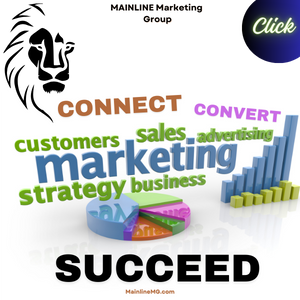Table of Contents
- 1. Develop a Compelling Non-Profit Website
- 2. Leverage Social Media Platforms
- 3. Create Engaging Content Marketing Campaigns
- 4. Utilize Email Marketing Effectively
- 5. Implement Search Engine Optimization (SEO)
- 6. Embrace Video Marketing
- 7. Use Data Analytics to Track and Improve Performance
- 8. Engage Donors and Volunteers with Virtual Events
- 9. Collaborate with Influencers and Partners
- 10. Adopt Mobile-First Strategies
- FAQs
- Conclusion
1. Develop a Compelling Non-Profit Website
Design with Impact
Your website is often the first touchpoint for potential supporters. A compelling non-profit website should be visually appealing, easy to navigate, and mobile-friendly. In 2025, over 70% of online traffic comes via mobile devices, making responsive design a must. Use high-quality images and clear calls-to-action (CTAs) to guide visitors toward donating, volunteering, or subscribing.
Example: Organizations like charity: water have successfully used minimalist design coupled with storytelling to engage visitors. Incorporating impactful stories and visuals inspires action and fosters trust. Regularly update your website to reflect your latest campaigns and achievements, showing transparency and progress.
Tip: Use a user-friendly website builder or work with professional developers specializing in non-profit design to ensure your site is optimized for conversions.
Implement Clear Navigation and Fast Loading
Navigation is the backbone of user experience. Organize your menu logicallyâhome, about, programs, donate, get involved, contact. Use hierarchy and labels that resonate with visitors. A cluttered menu can deter engagement; keep it simple and intuitive.
Fast loading times are crucial. Research indicates that a one-second delay in load time can reduce conversions by 7%. Compress images, leverage caching, and minimize code to speed up your site. Remember, a sluggish website can frustrate supporters and diminish trust.
Pro tip: Use analytics tools like Google PageSpeed Insights to identify and fix speed issues regularly.
2. Leverage Social Media Platforms
Target the Right Audience
In 2025, social media remains the primary channel for engaging supporters. Focus on platforms where your target audience is most activeâbe it Facebook, Instagram, TikTok, or LinkedIn. Use demographic data and analytics to tailor your content and messaging effectively.
For example, nonprofits targeting younger audiences often find TikTok and Instagram more effective in creating viral campaigns. Share stories, testimonials, behind-the-scenes glimpses, and success stories to foster emotional connections.
Tip: Use platform-specific features such as reels, stories, or polls to boost engagement and interactivity.
Consistent Posting and Engagement
Consistency is key. Develop a content calendar that aligns with your campaigns and events. Regular posting keeps your organization top-of-mind and encourages ongoing support.
Engage actively with followers by responding to comments, messages, and mentions. Building a community around your cause can increase supporter retention and advocacy.
Pro tip: Use social media management tools like Hootsuite or Buffer to schedule posts and monitor engagement metrics.
3. Create Engaging Content Marketing Campaigns
Storytelling that Inspires Action
Content marketing for non-profits in 2025 should focus on authentic storytelling. Share real stories of the people or causes your organization supports. Visual content, especially videos and infographics, can communicate complex issues more effectively.
Adopt a narrative approach that highlights impactâshow supporters how their contributions make a difference. Use emotional appeals backed by data and testimonials to motivate action.
Example: A campaign depicting a beneficiaryâs journey, complemented by photos and videos, can drive both awareness and donations.
Educational and Informative Content
Beyond stories, provide value through educational content. Inform your audience about your cause, industry trends, or how they can help. Content such as blogs, webinars, and guides establish your organization as an authority.
In 2025, search engines favor organizations that produce high-quality, relevant content. Optimizing your blog posts with keywords like “online marketing for non-profits” can help increase visibility.
Actionable tip: Use storytelling combined with SEO strategies to maximize reach and engagement.
FAQs about Online Marketing for Non-Profits
Q1: What is the most effective online marketing strategy for non-profits in 2025?
While strategies vary based on your specific audience, integrating social media, content marketing, and SEO offers the best results in 2025. Tailoring your message and consistently engaging supporters leads to higher impact and donations.
Q2: How can non-profits improve their SEO in 2025?
Focus on creating high-quality, keyword-optimized content, improving site speed, and building backlinks from reputable sources. Using keyword phrases like “online marketing for non-profits” strategically boosts your search engine ranking.
Q3: Why is mobile optimization crucial in 2025?
Because over 70% of online traffic comes via mobile devices, ensuring your website and content are mobile-friendly enhances user experience, increases engagement, and maximizes donations and volunteer sign-ups.
Q4: How do data analytics help non-profits in their online marketing efforts?
Analytics provide insights into supporter behavior and campaign performance. Use tools like Google Analytics to monitor traffic, conversions, and engagement, enabling data-driven decisions for future campaigns.
Conclusion
Mastering online marketing for non-profits in 2025 is essential to increasing your organizationâs reach and impact. From building a compelling website to leveraging social media and video, each strategy plays a vital role in engaging supporters and donors. By implementing these 10 effective strategies, your non-profit can thrive in the digital landscape of 2025. Remember, consistent engagement, authentic storytelling, and data-driven decisions are your keys to success. Embrace these techniques today to make a difference tomorrow!


